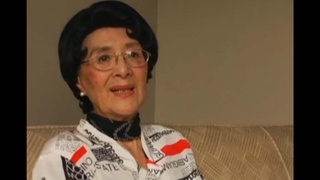Interviews
Father’s Optimism
One of the things about my dad, being Nisei, he was very optimistic. You know, the rumor around Japantown was, oh, sell everything. Get what you can, we’ll never come back. All these stories about Nazi Germany and what was going on in Europe. One of the rumors that we would hear was, what’s going to happen. If Japan won the war, or if US wins the war, what’s going to happen? Either way, we’re all just going to be lined up and executed, so we’ll never comeback.
But my dad, he always thought that, yeah we’ll be back. In fact, he was so optimistic that one of his best friends was a Chinese family. And so he offered Chuck, to live in our home, which he had just purchased in 1939. And so Chuck and his family, and had a daughter about my age at that time. They came and lived in the house. And so after the war, when we came back to San Francisco, we had a home to come back to.
Date: August 26, 2015
Location: California, US
Interviewer: John Esaki
Contributed by: Watase Media Arts Center, Japanese American National Museum
Explore More Videos

“Everybody went in like sheep”
(1913-2013) Doctor specializing in obstetrics in Southern California

The horror of Hiroshima after the atomic bombing (Japanese)
(1928 - 2008) Drafted into both the Japanese Imperial Army and the U.S. Army.

Finding out Roosevelt wanted Japan to attack
(1919-2020) Member of the 1800th Engineering Battalion. Promoted Japan-U.S. trade while working for Honda's export division.

Parents expected to be taken by the FBI
(1919-2020) Member of the 1800th Engineering Battalion. Promoted Japan-U.S. trade while working for Honda's export division.

525 Quartermaster Corps
(1919-2020) Member of the 1800th Engineering Battalion. Promoted Japan-U.S. trade while working for Honda's export division.

Fort McClellan soldiers
(1919-2020) Member of the 1800th Engineering Battalion. Promoted Japan-U.S. trade while working for Honda's export division.

A Lifestyle Using Both Japanese and Spanish (Japanese)
(b. 1929) President of Amano Museum


Going to camp with the Terminal Island people
(1927-2010) Political Activist


Interned at age fifteen, I saw camp as an adventure
(1927-2010) Political Activist




